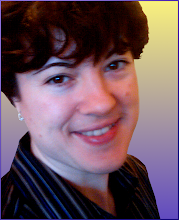This is my first time at GDC. It's already a whirlwind of experiences, and I don't even start officially attending GDC until Thursday! There's no way I'll remember everything I'm learning, so I'd better record the tidbits I've gathered:
Arriving Early is Totally Worth ItI arrived Saturday, and I'm so glad I did. It gave me a couple days to decompress and find my feet in San Francisco before going to my first party, which was way earlier than I expected!
You Can Attend Parties Before Your PassI thought that I wouldn't be allowed to go to parties until Thursday, which is when my Expo Pass to GDC starts. But, I found out about the Sparkpr Kick-Off Party on Monday, and figured it couldn't hurt to drop by and see if I could get in. It turned out they didn't even check my GDC Pass, because it was at a public venue!
Finding Out About PartiesI found out about parties using several methods:
1. Normal: the Parties and Networking page on the official GDC website
2. Watching: Facebook GDC events
3. Seeking: Googling the phrase "GDC 2010 Parties"
4. Stalking: searching the #gdcparty tag on Twitter
5. Mooching: constantly exchanging info with other friends who were also doing research
6. Viral: asking people at parties about other parties
You Don't Have to be InvitedKnowing where the parties are is apparently far more important than actually getting invited to them. I met the hostess at the party I crashed, and she asked me how I found out about the party. I admitted I had been stalking Twitter tags, and she said, "Great! Here, have a free drink! I hope you enjoy yourself."
Don't Buy DrinksI bought myself two drinks before getting a free drink from the hostess and being offered a drink by an industry professional from Argentina. That made a total of 4 drinks, which is pushing my limit on being social while still being articulate. Next time, I won't buy myself drinks, so that I can accept drinks from other people when they use that as an icebreaker.
Journalists Know ThingsRachel Rutherford is right. If you randomly talk to someone and they turn out to be a journalist, find out as much from them as you can (politely). They know about lots of parties and other random events, and if you are lucky enough to befriend one, you're basically set for the whole conference.
FlitIf the person you're talking to looks tired/bored/edgy/whatever, leave! You have no obligation to keep talking to them, and your time is better spent talking to someone who is actually engaged by you. In fact, it seems to be better to conduct a conversation with an eye toward ending it even slightly short on a positive note, rather than letting it drag on. Speaking of which...
Leave the Conversation GracefullyLearn these words well: "It was nice meeting you." Quite possibly followed with: "And good luck with GDC!" I was on the receiving end of these words and a very genuine smile, and it made me feel completely happy about the conversation as a whole, which of course is exactly how you want someone to feel when exiting a conversation with you.
Follow Up ImmediatelyAs soon as you get back to your hotel, e-mail the people you met who were gracious enough to exchange business cards with you. It will be a lot easier than trying to e-mail everyone you met over the whole week when you get back to your hometown and your job/school. And, if you made any contacts who might want to get together again during the week, this makes it possible.
If you have any tips to add, please post comments!













